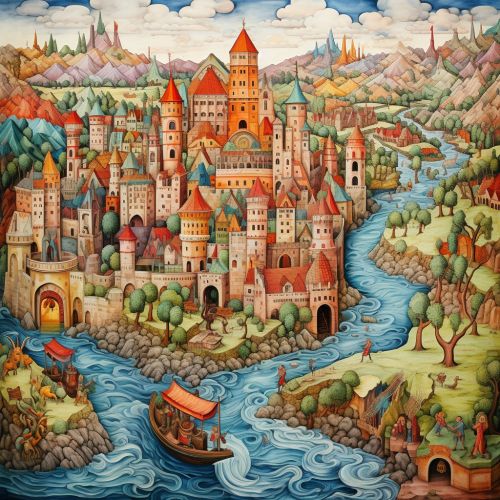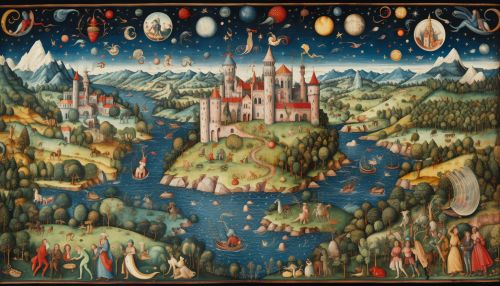Medieval European Maps
Introduction
Medieval European maps, also known as Mappae Mundi, are a rich source of historical and cultural information. They provide a unique perspective into the medieval world view, reflecting not only geographical knowledge but also theological, cosmological, and philosophical beliefs of the time.


Historical Context
The creation of maps in Europe during the medieval period was influenced by a variety of factors. These include the legacy of the Roman and Greek civilizations, the spread of Christianity, the growth of commerce and exploration, and the development of scholarly institutions such as monasteries and universities.
Types of Medieval Maps
There are several types of medieval European maps, each with its own characteristics and purposes. These include world maps, regional maps, city maps, pilgrimage maps, and sea charts, among others.
World Maps
World maps, or mappae mundi, were the most common type of map in the Middle Ages. These maps were not intended to be geographically accurate by modern standards. Instead, they were symbolic representations of the world as understood within the Christian worldview. The most famous of these is the Hereford Map, created around 1300.
Regional Maps
Regional maps focused on specific areas of Europe, such as kingdoms, provinces, or dioceses. These maps were often used for administrative purposes, such as defining borders or managing land ownership. An example of this type of map is the Gough Map of Britain, which dates from the late 14th century.
City Maps
City maps, or plans, depicted the layout of cities. These maps were often highly detailed, showing individual buildings, streets, and landmarks. They were used for a variety of purposes, including urban planning, military strategy, and civic pride. An example of a medieval city map is the Matthew Paris's map of London.
Pilgrimage Maps
Pilgrimage maps were designed to guide pilgrims on their journeys to holy sites. These maps often included detailed routes, distances, and descriptions of landmarks along the way. The most famous pilgrimage map is the Peutinger Table, a 13th-century copy of a Roman itinerary map.
Sea Charts
Sea charts, or portolans, were used by sailors for navigation. These maps were highly accurate and detailed, showing coastlines, harbors, and navigational hazards. The earliest known portolan charts date from the late 13th century.
Mapmaking Techniques
The process of creating a medieval map involved several steps, including gathering information, drafting the map, and adding decorative elements. The mapmaker, or cartographer, would often begin by consulting existing maps, written accounts, and oral reports. They would then draft the map using tools such as compasses, rulers, and pens. Finally, they would add decorative elements, such as illustrations, colors, and gold leaf.
Interpretation and Use
Medieval maps were not just practical tools for navigation or administration. They were also symbolic representations of the world, reflecting the beliefs and values of their creators. As such, they were often used for educational and religious purposes, such as teaching the geography of the Bible or illustrating theological concepts.
Legacy
The legacy of medieval European maps is significant. They provide valuable insights into the medieval worldview and have influenced the development of cartography and geography. Moreover, they continue to inspire and fascinate scholars, artists, and map enthusiasts today.
